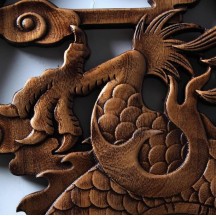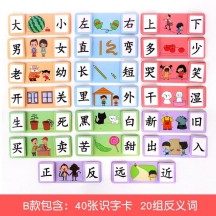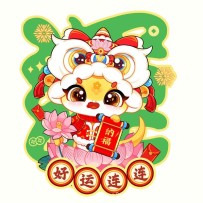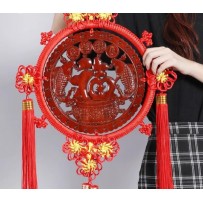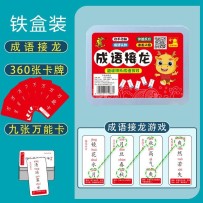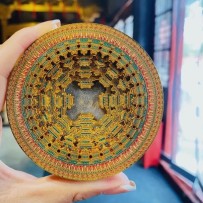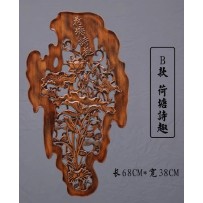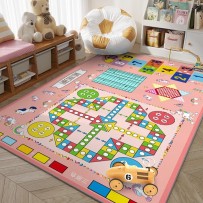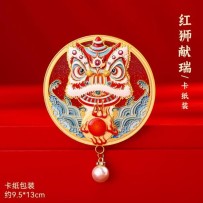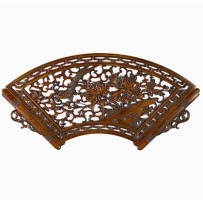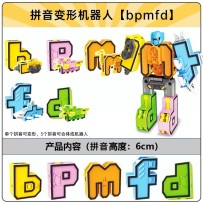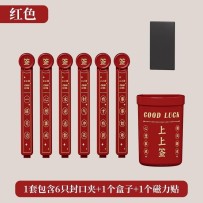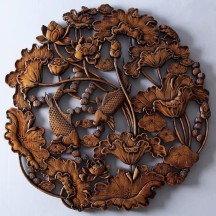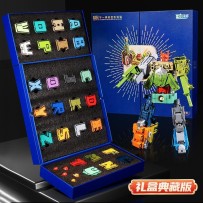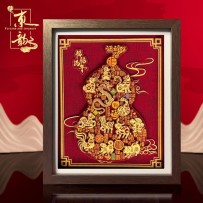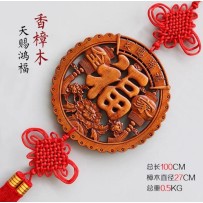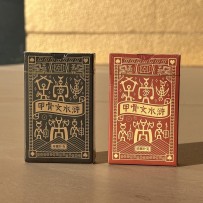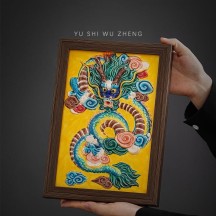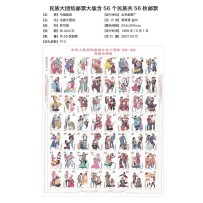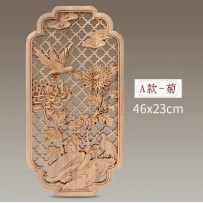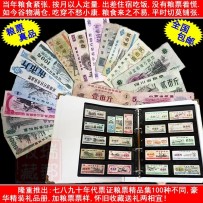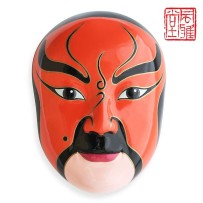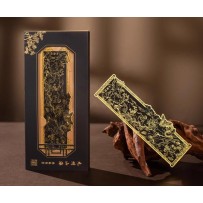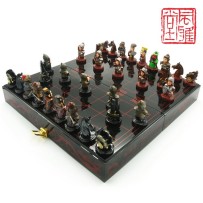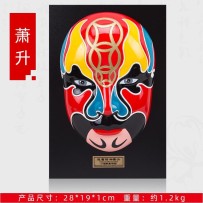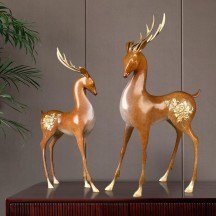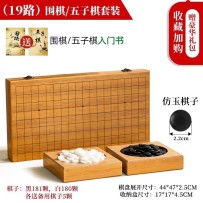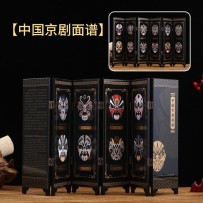Dongyang woodcarving is renowned for its exquisite carving craftsmanship. Artisans employ a variety of carving techniques, such as relief carving, through carving, and round carving, to vividly present various patterns on camphor wood boards. The lines are smooth and the layers are distinct, demonstrating an extremely high artistic standard.
Subcategories
Active filters
Fridge magnets are small yet delightful cultural and creative products. They serve not only as decorative items but also as carriers of travel memories, expressions of emotion, and even conveyors of cultural messages.
The Chinese knot symbolizes unity, beauty, happiness and peace, and has meanings such as reunion, completeness and good fortune. Dongyang woodcarving has a long history. The patterns carved on it often contain rich cultural significance, endowing the pendants and ornaments with a deeper cultural background and expressing people's yearning for a better life.
Idiom Solitaire is a word game in which players continue the chain by using the last character of one idiom as the first character of the next. This game is not only entertaining but also helps improve language skills, preserve cultural heritage, promote social interaction, and support emotional well-being.
Fridge magnets are small yet delightful cultural and creative products. They serve not only as decorative items but also as carriers of travel memories, expressions of emotion, and even conveyors of cultural messages.
Dongyang woodcarving mainly features flat relief, and is characterized by multi-layered relief and scattered perspective composition. Carvers employ techniques such as thin relief, low relief, deep relief, high relief, and multi-layer layering to create works that are rich in layers yet dynamic, with smooth and natural lines, enabling them to vividly present various patterns on camphor wood.
Fridge magnets are small yet delightful cultural and creative products. They serve not only as decorative items but also as carriers of travel memories, expressions of emotion, and even conveyors of cultural messages.
Dongyang woodcarving mainly features flat relief, and is characterized by multi-layered relief and scattered perspective composition. Carvers employ techniques such as thin relief, low relief, deep relief, high relief, and multi-layer layering to create works that are rich in layers yet dynamic, with smooth and natural lines, enabling them to vividly present various patterns on camphor wood.
The meaning of a "fortune slip" refers to the act of drawing a message to predict the future or seek insight into good or bad fortune—essentially a form of divination. It is often seen as a symbol of hope, offering spiritual comfort in times of difficulty, and can also serve as a way to relax and lighten one’s mood.
Dongyang woodcarving mainly features flat relief, and is characterized by multi-layered relief and scattered perspective composition. Carvers employ techniques such as thin relief, low relief, deep relief, high relief, and multi-layer layering to create works that are rich in layers yet dynamic, with smooth and natural lines, enabling them to vividly present various patterns on camphor wood.
This product is inspired by the "gourd," which serves as the central design element. Combined with meaningful text, it incorporates characteristics and customs of traditional Chinese festivals to create a joyful and harmonious festive atmosphere. The overall design features a golden color scheme, symbolizing prosperity and good fortune. It creatively integrates hollowed three-dimensional imagery with traditional paper-cutting, a form of intangible cultural heritage, resulting in a unique and artistic decorative piece.
Dongyang woodcarving mainly features flat relief, and is characterized by multi-layered relief and scattered perspective composition. Carvers employ techniques such as thin relief, low relief, deep relief, high relief, and multi-layer layering to create works that are rich in layers yet dynamic, with smooth and natural lines, enabling them to vividly present various patterns on camphor wood.
These creatively designed playing cards make oracle bone script appear adorably charming. Each card is like a window into ancient civilization, allowing everyone to learn more about oracle bone script through interactive gameplay. This fresh and engaging approach deepens the understanding and memory of characters from Water Margin, encouraging more people to appreciate and take interest in oracle bone script, and to experience the beauty of Chinese charac
Among the Four Divine Beasts, the Azure Dragon holds significant symbolic meaning and cultural value. It represents power and authority, protection and blessings, morality and wisdom, as well as cultural heritage and a sense of national pride.
Dongyang woodcarving mainly features flat relief, and is characterized by multi-layered relief and scattered perspective composition. Carvers employ techniques such as thin relief, low relief, deep relief, high relief, and multi-layer layering to create works that are rich in layers yet dynamic, with smooth and natural lines, enabling them to vividly present various patterns on camphor wood.
This set of National Unity stamps, themed around joy, harmony, and celebrating the birthday of the motherland, includes a total of 56 stamps. For the first time, the unique charm of China’s 56 ethnic groups is vividly captured within these miniature artworks. Each stamp represents one ethnic group, featuring a young man and woman in traditional attire—singing, dancing, or engaging in everyday life. The illustrations are rich in character, with bright, pure colors, elegant and flowing lines, and expressive faces.
Chinese fan culture carries a profound cultural heritage and is an integral part of the nation's traditions. Beyond being used for cooling, fans also serve as props in dance and stage performances, symbolizing friendship and connection. They make thoughtful gifts for friends, family, and international guests. Today, fan decorations are increasingly found in homes and have gradually evolved into objects of artistic appreciation, greatly enhancing their cultural and aesthetic value.
Dongyang woodcarving mainly features flat relief, and is characterized by multi-layered relief and scattered perspective composition. Carvers employ techniques such as thin relief, low relief, deep relief, high relief, and multi-layer layering to create works that are rich in layers yet dynamic, with smooth and natural lines, enabling them to vividly present various patterns on camphor wood.
Ration coupons are products of a specific historical period, symbolizing the planned economy, material shortages, and the state's efforts to ensure people's livelihood. They were not merely vouchers for purchasing grain, but also a reflection of the economic system and social life of that era, carrying the memories and cultural significance of a particular time in history.
Facial makeup in Peking Opera is a decorative art form that combines dots, lines, shapes, and colors in an organic way. With vibrant hues, elegant designs, and exaggerated stylization, it vividly and expressively portrays the appearance and personality traits of theatrical characters. This art form reflects the aesthetic creativity and cultural spirit of the Chinese people.
The term "Xiangqi" (Chinese chess) originated during the Warring States period and has its roots in China. Its strategies are inspired by the ancient military principles found in Sun Tzu's The Art of War, particularly the idea that "the supreme art of war is to subdue the enemy without fighting.
Facial makeup in Peking Opera is a decorative art form that combines dots, lines, shapes, and colors in an organic way. With vibrant hues, elegant designs, and exaggerated stylization, it vividly and expressively portrays the appearance and personality traits of theatrical characters. This art form reflects the aesthetic creativity and cultural spirit of the Chinese people.
Deer are noble, elegant, gentle and mysterious animals with upright postures.They are a good choice for displaying at home or giving as gifts.
Facial makeup in Peking Opera is a decorative art form that combines dots, lines, shapes, and colors in an organic way. With vibrant hues, elegant designs, and exaggerated stylization, it vividly and expressively portrays the appearance and personality traits of theatrical characters. This art form reflects the aesthetic creativity and cultural spirit of the Chinese people.











